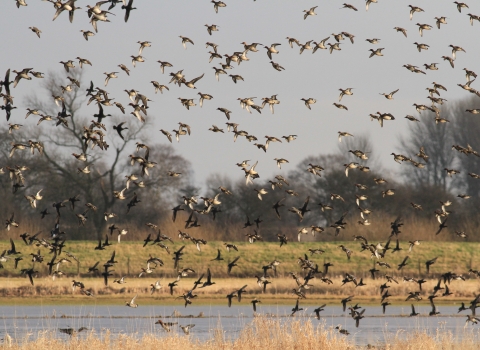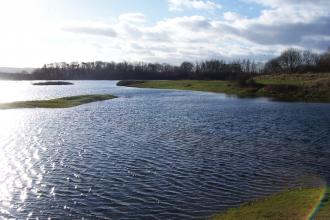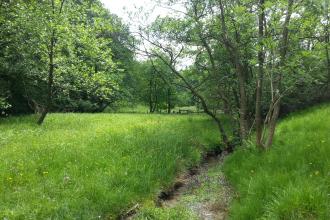The mighty Yorkshire Derwent...
The Yorkshire Derwent has the largest single river catchment in Yorkshire. A catchment is the area of land from which water flows into a river.
The Derwent catchment is made up of a variety of habitats, which provide a home for a wide range of wildlife. From its source in the North York Moors National Park, it flows south through the lowlands of the Vale of Pickering and Vale of York, to Barmby Barrage where it finally meets the River Ouse.
Aside from its ecological importance, the Derwent catchment is also a major source of drinking water for the people of Yorkshire, particularly in Leeds, Hull, Scarborough, Sheffield and York. It supplies an average of 200 million litres of water per day to homes and businesses across Yorkshire!
We mention different environmental designations like SSSI and SPA below.
See our guide to areas that are protected for wildlife.
From upland beginnings...
The Derwent begins its journey up as a fast-flowing moorland stream in the North York Moors, a place of international importance for its wildlife including golden plover, lapwing and merlin, its habitats and landscape.
Leaving the open heather moorland behind, the river makes its way through steep sided wooded valleys. Here, the river is home to native white clawed crayfish, brown trout and water vole and surrounded by mixed deciduous woodland.
Weaving away from the uplands, the River Derwent flows into the Vale of Pickering where it continues through a flat, low-lying landscape of agricultural land and rural communities.
...through thriving wildlife habitats...
The main River Derwent is itself a Site of Special Scientific Interest (SSSI) from Malton to Barmby Barrage due to its important array of wildlife, including plants, fish, insects and breeding birds. Notable species include river lamprey, otter, and yellow water-lily.
This highlights the importance of the River Derwent’s high conservation value and requires that landowners manage their land surrounding the river appropriately to conserve its special features. However, despite this protection, the river suffers from a range of pressures resulting from how the river and surrounding land is and has been managed. There are many organisations who are working towards improving the ecological health of the river by restoring the mosaic of characteristic habitats needed for the wildlife to recover and thrive.

(c) Lucy Murgatroyd
...to lowland floodplain meadows.
The Derwent eventually flows into the Lower Derwent Valley, a network of internationally rare floodplain meadows and one of the few places where traditional methods of haymaking are still practised over a large area.
The Lower Derwent Valley is a highly protected area due to the large numbers of wintering ducks and breeding waders.
It is a hugely dynamic landscape, particularly so between October and July. There is always plenty to see and hear, from the haunting call of the curlew over the flowering floodplain meadows of great burnet in summer to the formation of great lakes in winter, which attract up to 30,000 birds!
Nature reserves in the Derwent Catchment
From dappled broadleaved woodlands to chalk-rich grasslands bursting with wildflowers, Yorkshire Wildlife Trust manages nature reserves along the length of the River Derwent. Discover more about the reserves and their wildlife below.







